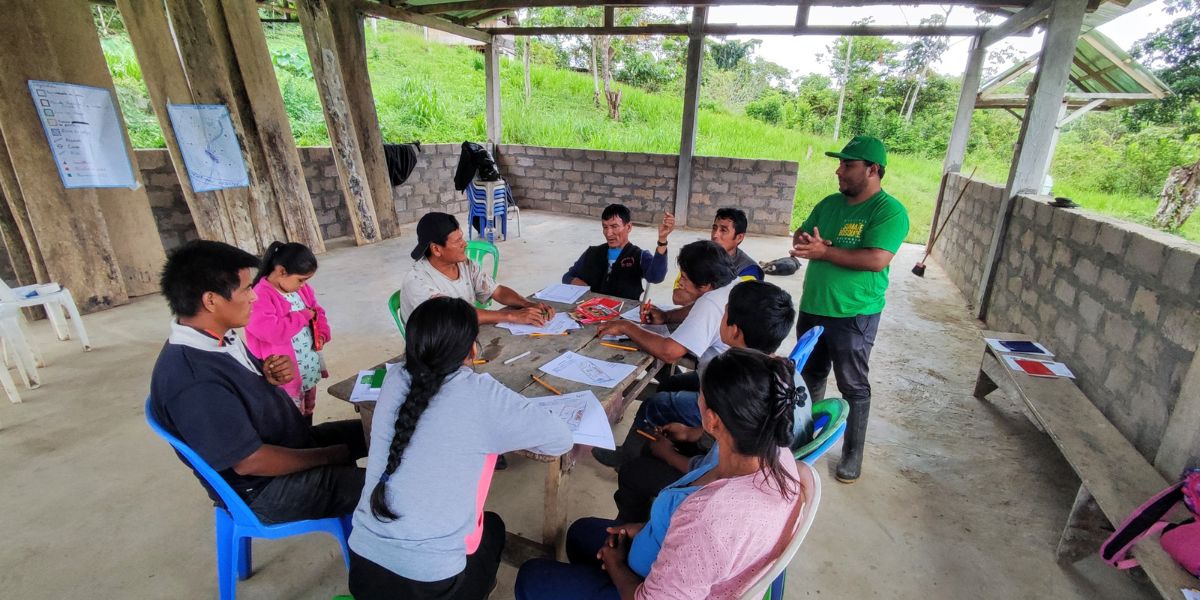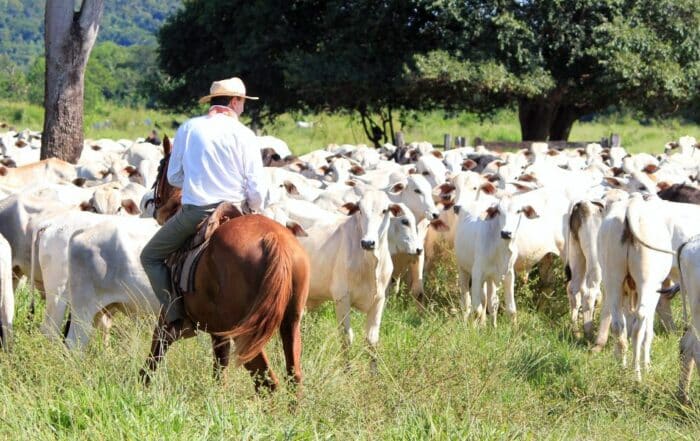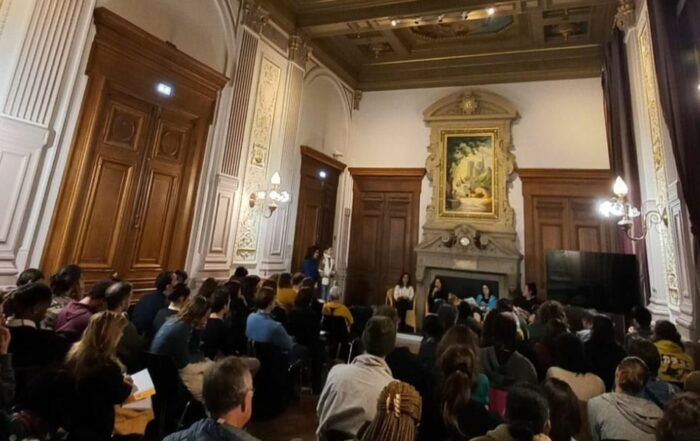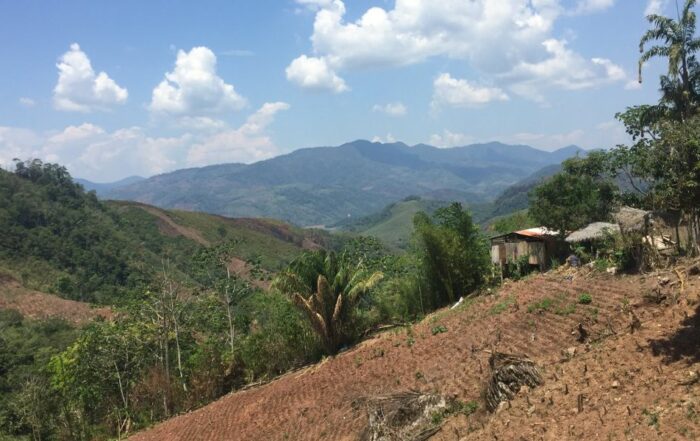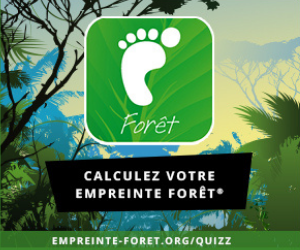Context:
The participants learned to follow agroforestal design methodology in orden to choose the best spot to plant their trees, according to the specie and their objective. However, the second part of the course resumed later in January, after a brief holiday, in Tingo María.
Why do we use plot design?
Plot design provides information about the characteristics of the whole plantations, whether there are fields covered by forest or not. During our courses, we focus instruction on moving plants from the nursery into the main field. We also use species sheets to determine the necessary density and spread since this is very important to make sure that the plants grow normally, without needing to compete for access to resources such as water or nutrients.
What are the species sheets for the forest and bee species?
Species sheets come from a collaboration between volunteers and the technical team in the field. In these sheets, we can find a summary of the technical and economic use of each species, but also important information regarding the harvest and how to deal with diseases or pests.
Thanks to this tool, participants have been more successful in establishing field plantations!
How are the courses made? What do the participants think about it?
As in every course, participants started with an ice breaker in order to express how they were feeling that day before a quick recap of the previous lesson. Then, we distributed the plantation schemes to emphasize the importance of the agroforestal designs and to demonstrate which tree should we use in which circumstances, according to the species sheets. For new participants that needed help drawing their schemes, the team was there to help and to offer them personalized support to ensure all the information was well understood.
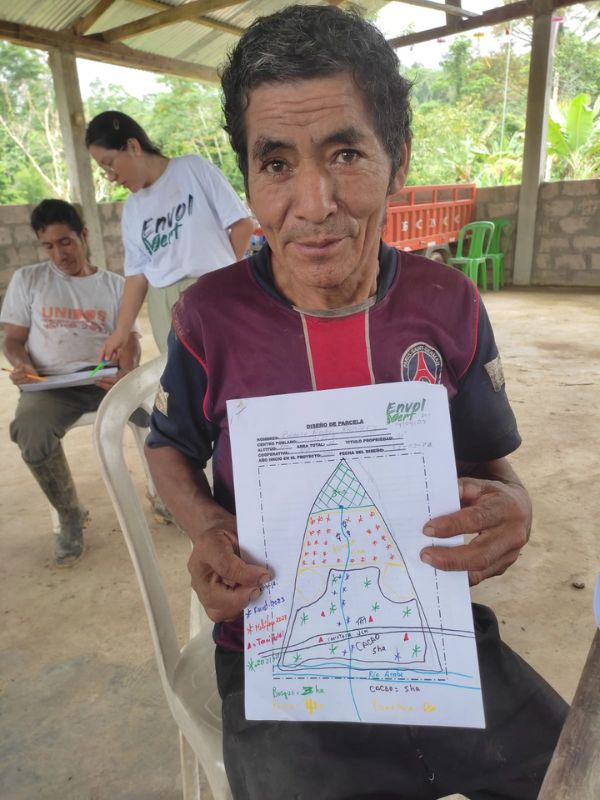
At the end of the training, participants were very motivated to keep attending future trainings that focus on developing economical alternative « melipona bee » (an endemic bee species from the Amazon). We’ll let you know more about upcoming trainings in future articles, so stay tuned!
Context:
The participants learned to follow agroforestal design methodology in orden to choose the best spot to plant their trees, according to the specie and their objective. However, the second part of the course resumed later in January, after a brief holiday, in Tingo María.
Why do we use plot design?
Plot design provides information about the characteristics of the whole plantations, whether there are fields covered by forest or not. During our courses, we focus instruction on moving plants from the nursery into the main field. We also use species sheets to determine the necessary density and spread since this is very important to make sure that the plants grow normally, without needing to compete for access to resources such as water or nutrients.
What are the species sheets for the forest and bee species?
Species sheets come from a collaboration between volunteers and the technical team in the field. In these sheets, we can find a summary of the technical and economic use of each species, but also important information regarding the harvest and how to deal with diseases or pests.
Thanks to this tool, participants have been more successful in establishing field plantations!
How are the courses made? What do the participants think about it?
As in every course, participants started with an ice breaker in order to express how they were feeling that day before a quick recap of the previous lesson. Then, we distributed the plantation schemes to emphasize the importance of the agroforestal designs and to demonstrate which tree should we use in which circumstances, according to the species sheets. For new participants that needed help drawing their schemes, the team was there to help and to offer them personalized support to ensure all the information was well understood.

At the end of the training, participants were very motivated to keep attending future trainings that focus on developing economical alternative « melipona bee » (an endemic bee species from the Amazon). We’ll let you know more about upcoming trainings in future articles, so stay tuned!

